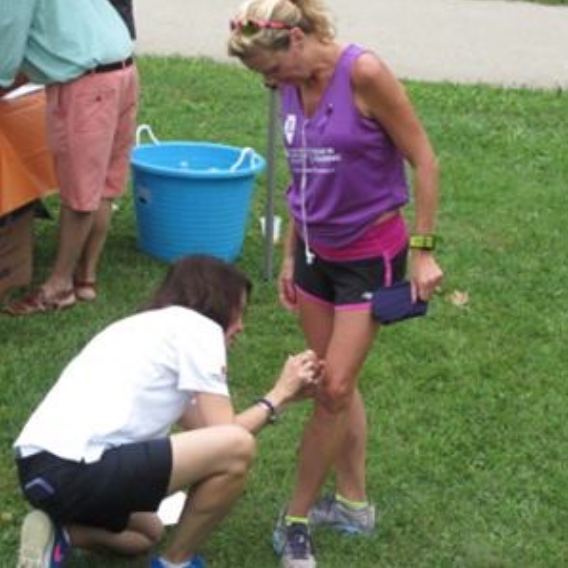Practice 'Sun Safety' This Summer
Although the sun has been playing hide-and-seek behind the clouds with us this spring, you can be sure it will make an appearance in all its bright glory soon enough. And while the sun may feel good while we are out running this summer season, too much exposure to a good thing can be bad for us in the form of skin cancer.
“Runners face a heightened risk of developing skin cancer due to prolonged sun exposure and the special challenges of protecting the skin while running and perspiring,” according to dermatologic surgeon Rebecca Tung, MD, Division Director at Loyola University Medical Center. “Daily sun safety and skin cancer prevention are an absolute must for runners, even on cloudy Chicago days and especially while running along Lake Michigan— which magnifies the sun’s harmful rays and creates ‘double trouble’. Skin cancer is the most common, yet most preventable, form of cancer in the United States, so take daily measures to run safe…it can save your skin and potentially save your life.”

Dr. Rebecca Tung checking a spot on a Chicagoan runner’s leg during a free skin cancer outreach. Skin cancer is highly treatable if caught early, so see a board-certified dermatologist at least annually for a thorough skin check.
Dr. Tung offers these ten helpful tips for staying safe while running in the sun.
1. 30 minutes before going out for your run, apply a broad-spectrum (UVA and UVB) waterproof sunscreen with an SPF of 30 or higher. There are many sunscreens formulated for sensitive skin that don’t have irritating ingredients that may be well-suited for your running lifestyle.
2. Use a ping-pong ball-sized amount of sunscreen (one ounce) to cover your entire body.
3. Re-apply every two hours – even on a cloudy, overcast or cool day, particularly when running near the water.
4. Completely coat all exposed areas of your face and body. Don’t forget the ears, neck, nose, shoulders, and the backs of your hands, arms, and legs.
5. Cover your lips with a sun protective lip balm that contains an SPF of 30 or higher.
6. Check expiration date on your sunscreen and remember that if you are using sunscreen properly, it should not last more than one season.
7. Seek shade whenever possible on the running trail and whenever outdoors.
8. Wear a broad-brimmed hat (preferably at least two inches with a back flap) instead of a regular baseball cap to help protect your face, ears and neck.
9. Protect your eyes with UV-protective sunglasses.
10. Wear UPF-rated sun protective running clothing as often as possible.

Using a sunscreen with an SPF of 30 or higher while out running in sunny conditions is a good defense against skin cancer
Dr. Tung also advises that you should examine your skin once a month or have your skin thoroughly examined by a board-certified dermatologist atleast once a year, or as recommended by your dermatologist.
Any area on your skin that crusts, bleeds, or does not heal after two weeks requires immediate attention from a dermatologist. If caught early, most skin cancers can be cured. Runners should know the ABCDE’s of Melanoma, Dr. Tung added.
IMPORTANT: If any mole shows signs of one of the following, it should be examined promptly:
A is for Asymmetry: if one half of the mole is unlike the other half.
B is for Border: if the mole’s border is irregular, jagged or poorly defined.
C is for Color: if the mole’s color is varied from one area to another or has multiple shades including tan, brown, black or even white, red or blue.
D is for Diameter: if the mole grows wider than the size of a pencil eraser.
E is for Evolving: if the mole bleeds, hurts, itches, or stands out as different from the rest.
Chicago-based marathon coach Ross Forman had his own battle with skin cancer, his melanoma was discovered and treated by Dr. Tung, and he wholeheartedly echoes Dr. Tung’s sun safety advice.
“After my own surprising run-in with skin cancer, now, whenever I go out on a run, sunscreen is as important to me as water ornutrition. As runners, we’ve got to treat skin cancer prevention and sun safety as priority health concerns. So examine your own skin regularly, go see your dermatologist at least once a year and if you do see a spot, get it checked out right away— don’t put it off! Don’t run any risks with your skin and your life. Do run safe!”
Connect With Us
see the latest from Fleet Feet Chicago